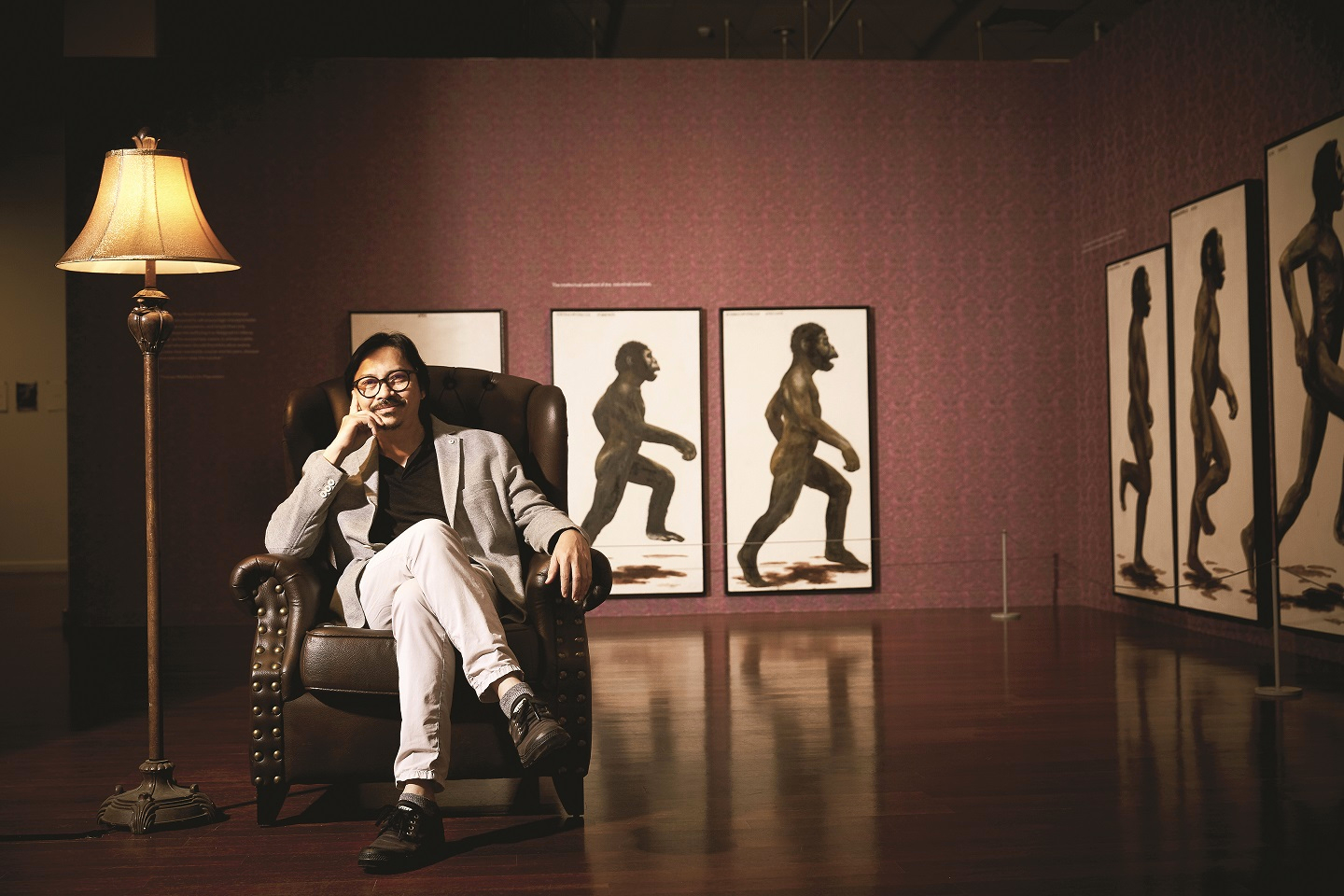
Malaysian artist Ahmad Fuad Osman is no stranger to the international art circles (Photography by SooPhye)
Ahmad Fuad Osman recalls his earliest encounter with art back home in rural Baling, Kedah. It was two paintings by his uncle that hung in his grandmother’s house. Fuad, as he is better known, was six or seven years old at the time. One of the paintings is part of his own collection today.
“My third brother, who is four years older than me, could draw quite well. I remember how he made a pencil drawing of Mickey Mouse and Pinocchio and stuck it on the wall of our wooden kampung house. That was my first experience of an exhibition, I guess. I thought then how cool that was and a kind of envious and brotherly rivalry slowly brewed in me, and I started to draw too. I also had a friend in school who could draw very well, much better than my brother,” he recounts.
Relating personal anecdotes such as these comes easily to Fuad. Calling him a storyteller would not be far from the truth as stories are often catalysts for his creations. He prefers to call the process a “freeing” of the memories, experiences and thoughts in his mind to alleviate its restlessness.
A varied breadth of these visual stories underline a retrospective of Fuad at the National Art Gallery (Balai Seni Negara) in Kuala Lumpur, entitled At The End Of The Day Even Art Is Not Important. It is a rare opportunity to examine the art, life and mind of the mid-career artist who, while prolific, well regarded and even labelled “controversial”, is under-celebrated.
As a storyteller, Fuad is particularly adept at timely, and conversely, timeless conversations. The tongue-in-cheek title for the exhibition stems from his belief that art should not be for art’s sake or be possessed as an object. To him, it should be a means of conversation and discussion. But Fuad is no provocateur. Instead, our conversation and walk-through of the exhibition reveals someone who is on a quest to make his world understood, be it on a personal or collective level, through the lens of his race, his faith, his country and, underlying it all, humanity as a whole.
And now the storyteller is being brought to view, sublimely curated by Shabbir Hussain Mustafa, who is senior curator at the National Gallery Singapore. We are offered a glimpse of the complexities that make Fuad tick, so to speak, as seen through seven chronological “cycles”, each named after an artwork. This offers a brand new narrative beyond mere retrospection.
Describing Fuad an artist who plays an important role in the history of contemporary Asean art, Mustafa says they first met last year during Latiff Mohidin’s Pago Pago exhibition at KL’s Ilham Gallery, which the former also curated. They share similar approaches to and interests in research and history.
---
For the full story, pick up a copy of The Edge Malaysia (Dec 23, 2019) at your nearest news stand. Save by subscribing to us for your print and/or digital copy.


